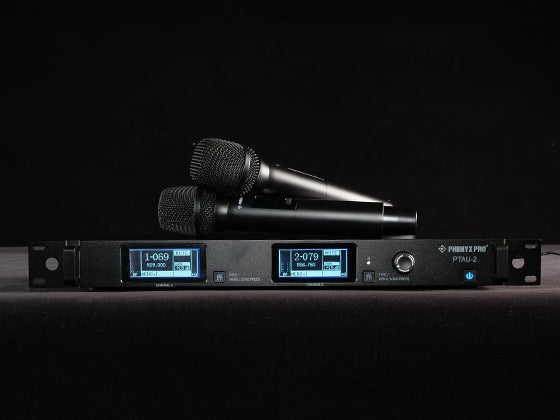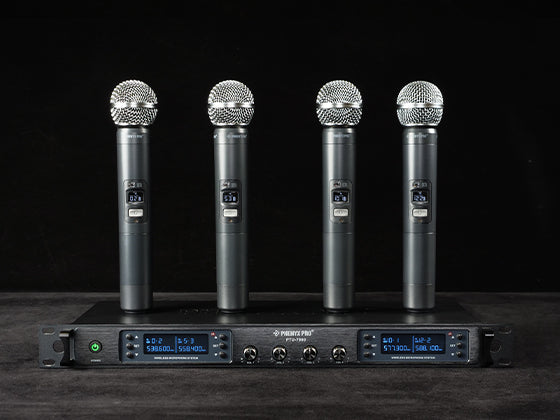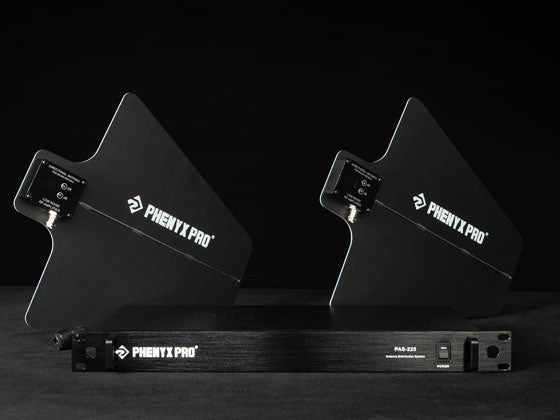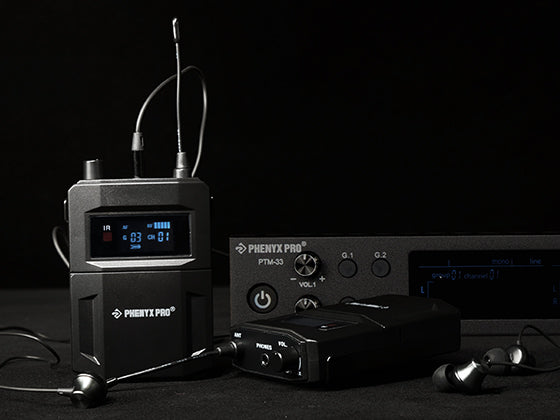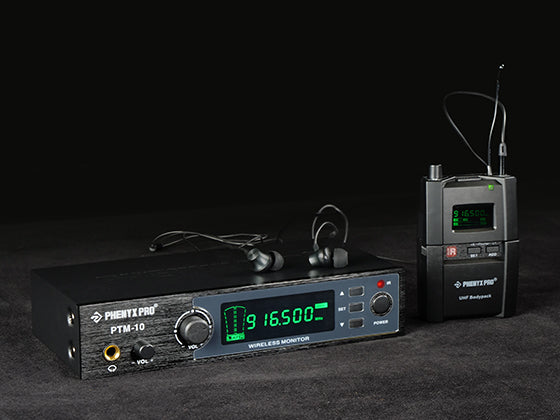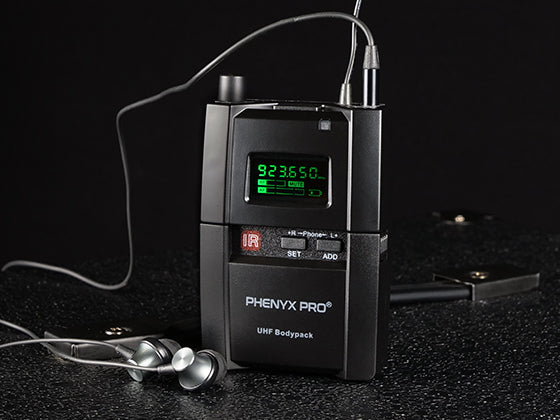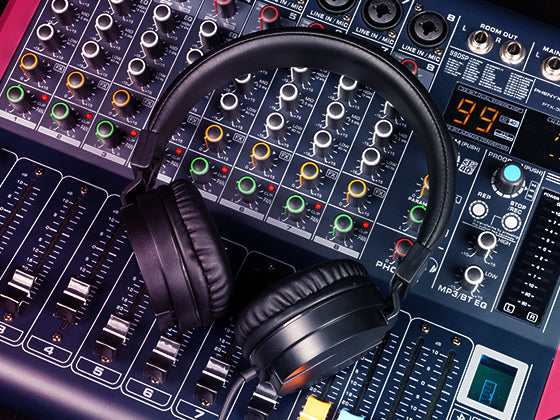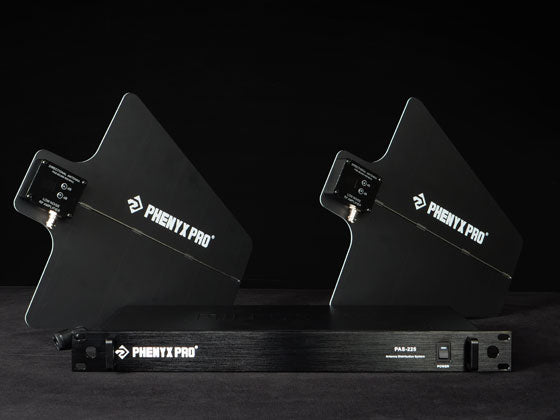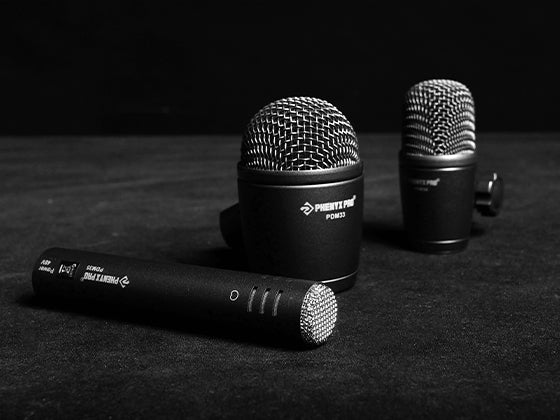Jocelyn
03-03-2023
Analog Wireless Mic vs. Digital Wireless Mic: Which One is Right for You?
You might be unsure of whether to pick a conventional analog microphone as usual or adopt the new fad of digital wireless mics as they keep emerging in the market. This blog aims to dispel your confusion, from exploring how digital and analog circuitries operate to carefully choosing the right one based on their pros and cons.

In the upcoming digital era of Web3, it seems that almost all aspects of our life are becoming more and more digital, from the heatedly discussed metaverse to our topic today, the digital audio experience. As digital technology in the audio world grows mature, it can sometimes rival its traditional analog counterpart. In this blog, we will make an unbiased and in-depth comparison between digital and analog circuitry to help you make an informed decision when it comes to choosing the right one.
How It Works
In the previous blog, Introducing the PDP-1/2 Wireless Microphone, we have learned about three main advantages of digital audio transmission, including sound quality, signal security and spectrum efficiency. Basically, all these advantages are relevant to the nature of the digital signal and how it works. Let's dive into how analog and digital circuitries operate differently.
Analog circuitry
We all know that a dynamic microphone is a transducer that converts a sound wave into an electrical impulse. When the sound waves hit the microphone diaphragm, the attached coil vibrates in the magnetic field to create fluctuation in electrical energy. This is how audio signals are transformed into continuous electric signals, which are also called analog signals.

According to the diagram below, analog signals are continuous electric impulses of varying amplitude in nature.

In order for an analog wireless microphone system to work, the analog signals are compressed in the transmitter and then sent to the receiver in the way of radio wave propagation in order to expand back to the original audio ready for use. This is called companding in the analog circuitry.
Digital circuitry
Unlike analog signals, digital signals are discrete binary data, zeros and ones in the form of bits. The digital circuitry works in a completely different way.
The digital circuitry encodes the audio signal into binary digital data and decodes them to reproduce the sound. During ciphering, sound waves pass the ADC (analog-to-digital converter), where usually, a PCM (pulse code modulation) encoder converts analog signals into digital data by sampling, quantizing and encoding. In the first step, the analog signals sampled every sample interval or period and the shape is retained consequently. Then, in every sample, the pulse generates a series of binary numbers (bit) to show the instant amplitude value, which is called quantizing. As a result, a bazillion samples are quantified, and the number of bits per sample is encoded as binary code and stored in data packets. Indeed, whether analog or digital signals, they rely on radio waves to be propagated. The transmitter resorts to radio frequency to send those data packets successively.

The DAC (digital-to-analog converter) in the receiver is responsible for reading and decoding the data and finally reproducing the sound. According to the diagram below, we can understand that digital signal uses discrete binary values to represent information.

For the digital wireless microphone system, two terms are relatively important to understand: sampling rate and bit depth. For one thing, the sampling rate represents the rate of the ADC capturing the analog signal samples and playing them back to reproduce the original sound. The higher the sampling rate, the more accurate the sound reconstruction since the converter captures the signal more frequently and thus restores more original information.

For another, the bit depth, the number of bits to represent a string of information, determines how precise the values are. The higher the bit depth, the more accurately the signal will be converted because it is sampled at a finer increment. The most important effect of bit depth is that it determines the dynamic range of the signal. Usually, 24-bit digital audio has a maximum dynamic range of 144 dB, while 96 dB for 16-bit. For example, Phenyx Pro released our new-designed portable digital wireless microphone systems last month, the PDP-1 and PDP-2, which adopts high-end 48kHz/24bit digital circuitry to cater to your needs.


Pros and Cons Analysis
Having learned about how analog and digital circuitries work, we can comprehensively understand their pros and cons in terms of sound quality, signal security, latency, spectrum efficiency, and RF performance.
Sound quality
Generally speaking, the digital system produces a cleaner and purer sound, owing to the high-resolution digital signals and the companding process in the analog system. The high sampling rate and bit depth of a digital wireless system means better resolution and renders cleaner sound with less distortion. As for the analog wireless system, it uses the companding process we mentioned above to reproduce the original sound and it is more possible to cause a loss in quality. However, some premium analog systems can handle the companding process better to deliver superior sound quality.
Signal security
As for signal security, digital circuitry has an absolute advantage compared to analog circuitry. Digital signals are encrypted as binary data so that they are scarcely affected by adjacent frequencies in the spectrum or barely intercepted from other devices during transmission. That means digital circuitry avoids signal crosstalk and features signal security. Conversely, analog signals are susceptible to crosstalk, carrying information from their spectrum neighbors or vice versa.
Latency
The analog circuitry transmits linear analog signals in real time, that is, with no latency. By contrast, the converter in the digital circuitry takes time to transform the analog signal to a digital one and then reverse back to analog again. Thus, there is usually some latency in a digital system where the amount of latency depends on the processing quality of the algorithm in different systems.
Latency is often one of the reasons why people hesitate to choose a digital wireless system. But some high-end digital circuitry can minimize the latency to a negligible level.
Spectrum efficiency
When it comes to spectrum efficiency, digital circuitry is better. In the digital transmission system, the carrier frequency is modulated into discrete binary codes, basically zeros and ones. Thus, the modulation is more effective, and the bandwidth of the signal is reduced to make space for more channels compared to the traditional FM modulation that occupies greater space around the transmission frequency. However, this does not mean it has more operable frequencies. For example, some digital products operating in 2.4 GHz or 5.8 GHz generally have 4 to 8 channels, much fewer than analog systems. But when both gears operate in the UHF band, digital circuitry can make maximum use of available channels to scale up your mic setup.
RF performance
As we mentioned above, digital and analog signals rely on RF transmission. That means both of them are susceptible to RF interference. For digital circuitry, if the RF signal is not strong enough or encounters interference, data packets cannot be received, and thus staccatos occur. The simple solutions for a stronger signal and fewer staccatos can be ensuring the line-of-sight distance and removing devices that may cause interference. For example, the PDP-1 and PDP-2 come with the angle TS male-to-female adapter which you can use to keep your receiver antenna upward for better reception.
For analog circuitry, if the RF signal strength is weak or there is outside interference, there will be cutoffs with distorted sound and noises. We can minimize and even avoid RF interference by employing the techniques in our blog articles below:
Conclusion
To put it in a nutshell, this blog explores how analog and digital circuitry works theoretically and analyzes their advantages and disadvantages. Digital system is not going to substitute the analog system but gives users more choices when it comes to audio experience to inspire better sound performance. In fact, most sound engineers install both of them in the rack. You can choose a suitable system based on your application and budget. Please contact us if you want more product information and recommendation.
Author

Jocelyn

